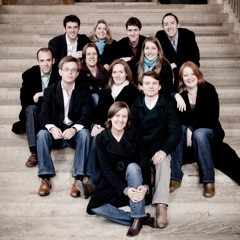by Daniel Hathaway

The source was the ten-volume collection, Tudor Church Music, inaugurated by the Carnegie United Kingdom Trust, one of over twenty foundations established by the Scottish-born industrialist, whom we also have to thank for the restoration of The Book of Kells, and a lot of public libraries and church organs.
Before “TCM,” the repertory of Tudor polyphony languished in cathedral and university libraries, pretty much forgotten because the music was written in one-for-each-voice part-books, rather than in score form where it could be seen as a whole and studied. Begun in 1922 with twenty volumes projected, “TCM” and the inexpensive, octavo offprints subsequently published by Oxford University Press provided choirs with ready access to the music from a seminal era when religious loyalties swung back and forth between Canterbury and Rome and musical styles went through a tug-of-war between the traditions of Catholicism and the reforming forces of Protestantism.
As a centenary tribute to the Carnegie U.K. Trust, Stile Antico has recorded a CD, “The Phoenix Rising,” entirely drawn from “TCM” that the choir recreated in its program on Friday evening. The program interleaved well-known works by Tallis, Morley, Gibbons, White and Weelkes among movements of Byrd’s magnificent underground work, the Mass for Five Voices. There were also motets by Byrd himself, and elaborate, recherché pieces from pre-Reformation years. The program book was choc with useful background information, including full texts and translations.
This repertory is mother’s milk for Stile Antico’s singers. They perform it with a deep understanding of style and nuance, as they showed in the opening work, Byrd’s famous Ave verum corpus. Vibrato — the enemy of polyphony in big ecclesiastical spaces — is not in their toolbox, and their clear, strong vocal lines cut through St. John’s luxuriant acoustics like laser beams. The singers achieved a remarkable sense of balance and ensemble. Only occasionally during the evening did a conductor fleetingly seem like a good idea — and only then to coax a penetrating voice back into the choral fabric.
Stile Antico achieved variety by varying the scoring of certain pieces. Only five singers were used for Tallis’s stark In ieiunio et fletu, an octet for Gibbons’s exuberant, eight-part O clap your hands together. Big votive antiphons by Robert Whyte (Portio mea, Domine) and John Taverner (O splendor gloriae) brought each half of the program to sumptuous conclusions (a spokesman promised that “with a little bit of luck” the Taverner would end with “a spectacular Amen,” and it did.)
Part of the appeal of Friday evening’s program, which drew a large audience, was the opportunity to hear superb performances of music you might have sung — or are still singing — in school, college or church choirs. It’s a bit like weekend warriors flocking to professional tennis tournaments to see how the pros ply their craft. For those audience members, Stile Antico was technically inspiring. For both singers and non-singers, they served up a rich spiritual experience.
Published on ClevelandClassical.com October 15, 2013
Click here for a printable version of this article.



